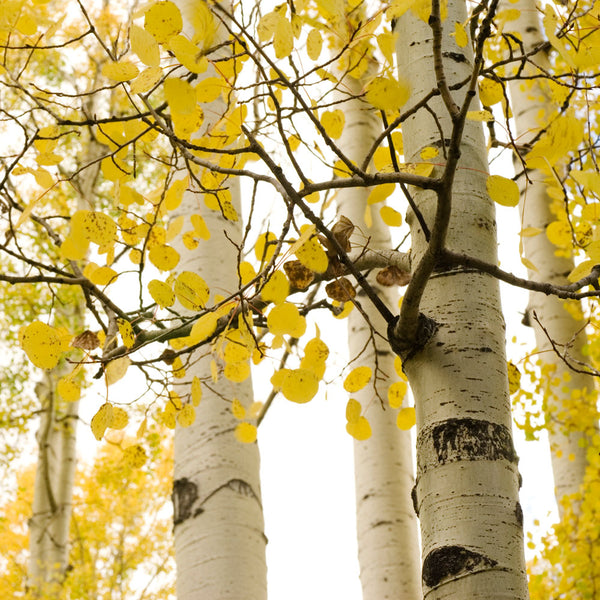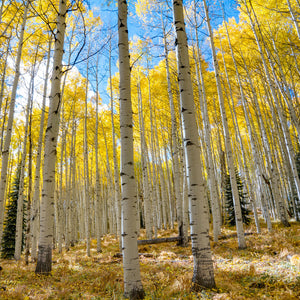Quaking Aspen Tree
Product Details
 Growing Zones 3-7
Growing Zones 3-7
| Soil Type | Adaptable, Well Drained |
| Sunlight | Full |
| Drought Tolerance | Good |
| Mature Height | 40-60 Feet |
| Mature Width | 20-30 Feet |
| Growth Rate | Fast |
| Fall Color | Yellow |
| Shipping Restriction | AK, AZ, HI |
For a sturdy, cold-hardy tree, the Quaking Aspen Tree is a perfect choice! This durable tree can handle even the harshest winters, and poor soil as well.
This tree’s signature quaking effect in the wind will give your yard a stunning, shimmering look! Between the heart-shaped green leaves that turn to a golden yellow in the fall and the pale gray bark, this tree is a unique addition to any home.
Since it grows quickly, you can expect this tree to gain about 5 feet per year until maturity. Slender but soaring, this is a wonderful shade tree that can thrive in a wide range of climate conditions.
Just plant it somewhere it can receive full sunlight and space to grow fast! It can reach heights of up to 80 feet once fully grown. And since it’s so sturdy, you can enjoy this tree for many years to come.
If you’re eager to have a tree that gives off gorgeous color and unique movement, order your own Quaking Aspen Tree now!
Is this tree deer-resistant?
The bark of the tree is, but the leaves can be eaten by deer, elk, and snowshoe hare!
Is this tree susceptible to pests or disease?
Poplar borers will attack trees that are in poor health, so taking good care of your tree is a helpful preventative. As for disease, powdery mildew disease can occur if soil and watering is not done correctly.
Planting
Place your potted tree in a well-shaded area, such as a garage, or plant it in a well-shaded area in your lawn if you are experiencing extreme heat.
When you're ready to plant, select a location where it can receive full sun (6+ hours of direct sun). The Quaking Aspen is quite adaptable to many soil types but requires well-draining soil. Dig your hole two times the width and depth of the root system of the plant your are working with. Hold the tree straight as you begin back filling the hole with your gardening/native soil mixture. Once the hole has been completely filled, water the area to settle the soil and then mulch to help keep weeds and grass.
Watering
Make sure your tree gets water during extended dry spells in the first year, particularly in the summer months. Drooping leaves are a sign of both over or under watering, so watering once weekly should be fine.
Fertilizing
Use 10-10-10 or 20-20-20 fertilizer formula. Avoid fertilizing the tree directly, and instead, fertilize the tree’s soil.















